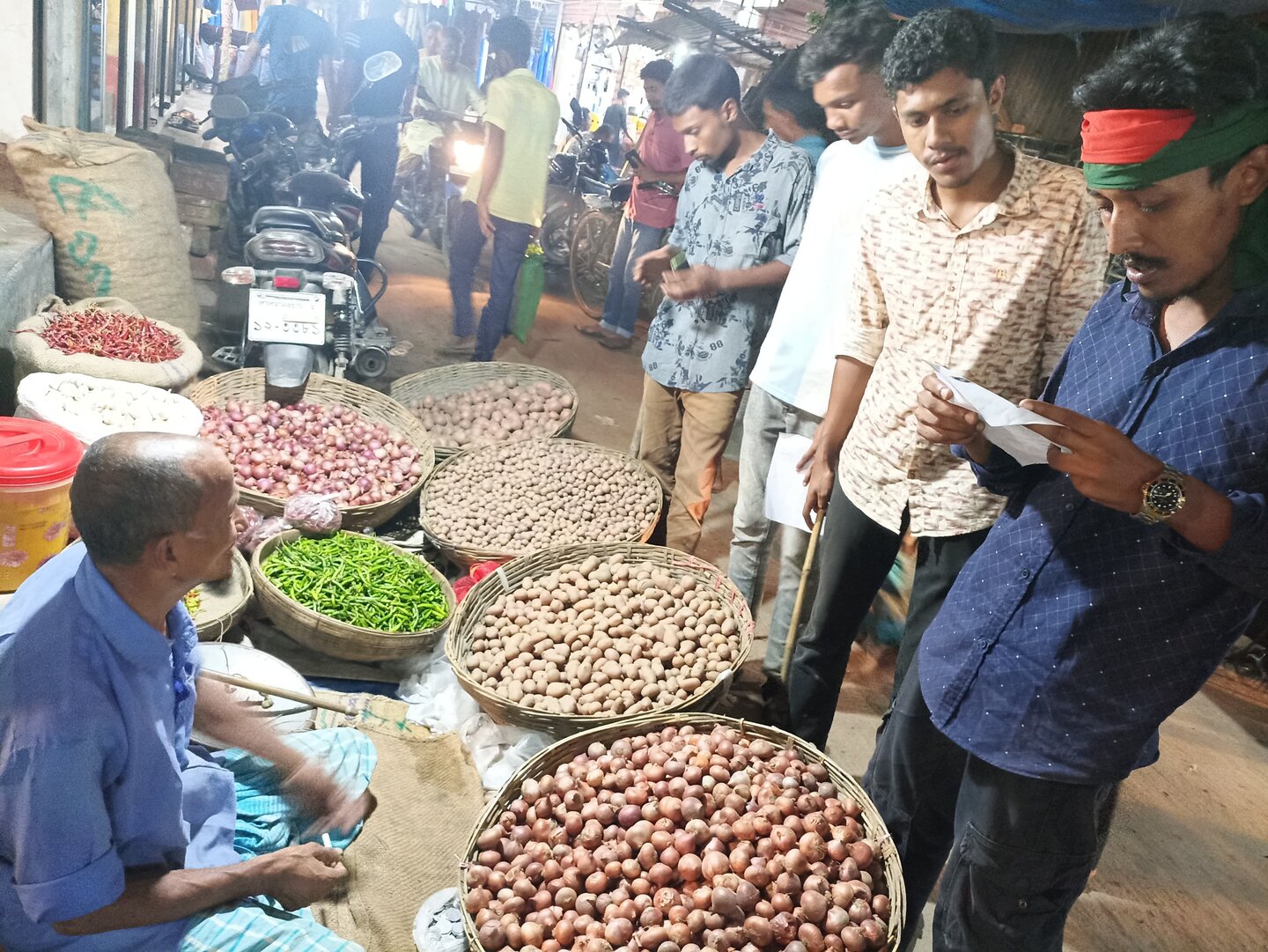In July 2024 Bangladesh witnessed a nationwide youth-led anti-discrimination student movement, which emerged in response to demands for the government’s jobs quota reform. This movement led to the fall of the Awami League (AL) -led government. Sporadic violence, particularly against minorities, erupted immediately after Prime Minister Sheikh Hasina left the country on August 5, 2024, following mass student protests. In the absence of law enforcement, unprovoked attacks spread nationwide, especially in northern Bangladesh, targeting homes, places of worship, and businesses of religious minorities, which were vandalized, looted, and set ablaze. Numerous reports of these incidents, and misinformation, quickly circulated on social media. However, in some areas, students, youth groups, and community leaders acted swiftly to protect shrines and prevent further violence.
From March 2020 to August 2022 Helvetas Bangladesh and Rupantar jointly implemented a project called CSO PVE Capacity Building (co-funded by the EU and Helvetas Germany) in 10 northern districts of Bangladesh to strengthen the capacity of civil society organizations (CSO) leaders and young people to promote peace, tolerance, and religious and communal harmony within their communities. The youth groups of Bogura, Dinajpur, Joypurhat, Naogaon, and Lalmonirhat districts formed during the project activities played a vital role in reducing vandalism and protecting places of worship after August 5, 2024.
Spotlight on the attacks on minorities in northern districts
According to press reports, the attacks began on the afternoon of August 5, with most incidents occurring in the first two days. From August 5 to 20, at least 2 minority individuals were killed, and 1,068 homes and businesses belonging to minority communities were damaged. Additionally, 22 places of worship were targeted. Most attacks occurred in Rangpur Division, affecting 219 establishments, followed by Rajshahi Division. with 155.
In Hatibandha, Lalmonirhat, thousands of Hindus attempted to cross the border into India after being attacked. Christian and Ahmadiyya communities, as well as Indigenous groups, also faced violence. In various districts, including Naogaon and Dinajpur, people from different communities, such as the Santals, Oraons, and Mundas, have faced beatings, attacks on their homes, arson, and looting.

How the young people stepped up
In the face of a collapsed law enforcement system that has largely failed to protect vulnerable communities, youth groups in Bogura, Joypurhat, Naogaon, Dinajpur, and Lalmonirhat intervened to prevent violence and vandalism. Youth leaders mobilized their communities to safeguard places of worship belonging to minority groups, reflecting a profound sense of solidarity and responsibility.
The Youth Group members involved in the CSO PVE Capacity Building project played a crucial role as defenders of minority rights and safety. They organized the protection of homes and temples, engaging local leaders and citizens to foster a collective sense of responsibility. Their actions include standing guard at religious sites, ensuring continuous vigilance, and supporting those who feel threatened. By stepping up during this critical time, they have shown remarkable leadership, courage, and the value of youth engagement during a crisis.
In addition to physically safeguarding these sites, youth group members have been vital in promoting peace and religious harmony through social media by sharing tolerance messages and support for vulnerable groups. Their efforts are crucial in preventing further tensions and building long-term resilience in their communities.
Sk Abu Rahat Md Mashruqul Islam, Program Coordinator of the youth group Pollee Unnyon Prokolpo (PUP) said, “After the CSO PVE Capacity Building Project finished, the young volunteers remained active, and we continue to motivate them. During recent turmoil, they have taken decisive actions to prevent violence and attacks on minorities. In the absence of security forces, after 5 August, in Bogura, the young people went on the roads to direct traffic. They also immediately started to patrol the village at night to prevent violence, cleaned the roads and planted trees. Young volunteers also sketched graffiti to convey social or political messages associated with peace, protest, and youth culture.
A young leader from Naogaon, Zainal Abedin Akash, stated, "I used my insights to promote peace and harmony during the violence in our area. I rallied my friends and fellow youth group members and contacted influential local leaders. Together, we quickly decided to protect our Hindu temple and prevent further violence. By mobilizing the community, we formed a united front to safeguard the temple and the homes of minority families”.
Another young leader Abu Bakkar Siddique said, "after August 5, I noticed that among minority communities fear and distrust were rising. Thus, I decided to lead a group of young people in Mokrampur Village, Shailgachhi Union, Naogaon Sadar, to ensure the village's security".
Rafiu Zamman, a youth leader from Joypurhat, shares, "After August 5, I knew we had to act quickly. Drawing from my leadership experience, I mobilized community members and youth groups to protect local temples. We organized meetings and peace rallies to foster unity and tolerance, to strengthen our community's resilience and commitment to harmony.”

In Lalmonirhat, young change agents supported traffic control on the roads, monitored local markets to address price hikes, and actively responded to any chaos or potential disruptions.
In Dinajpur, following the outbreak of violence on August 5, 2024, youth groups quickly convened to develop a plan to protect temples and the homes of minority communities. They organized themselves into various teams, to safeguard religious institutions and community properties. Despite numerous challenges, these young people actively worked to maintain a peaceful environment. Under dedicated leadership, they mobilized people from all backgrounds to stand against violence and intimidation, fostering the creation of trust and a more secure environment.
In conclusion, the CSO PVE Capacity Building in Bangladesh and Sri Lanka project has been instrumental in equipping young leaders to build community solidarity. It highlights the critical need for initiatives that engage and empower youth as change agents for peace and harmony, emphasizing the importance of ongoing support and guidance for building resilient and cohesive communities.

